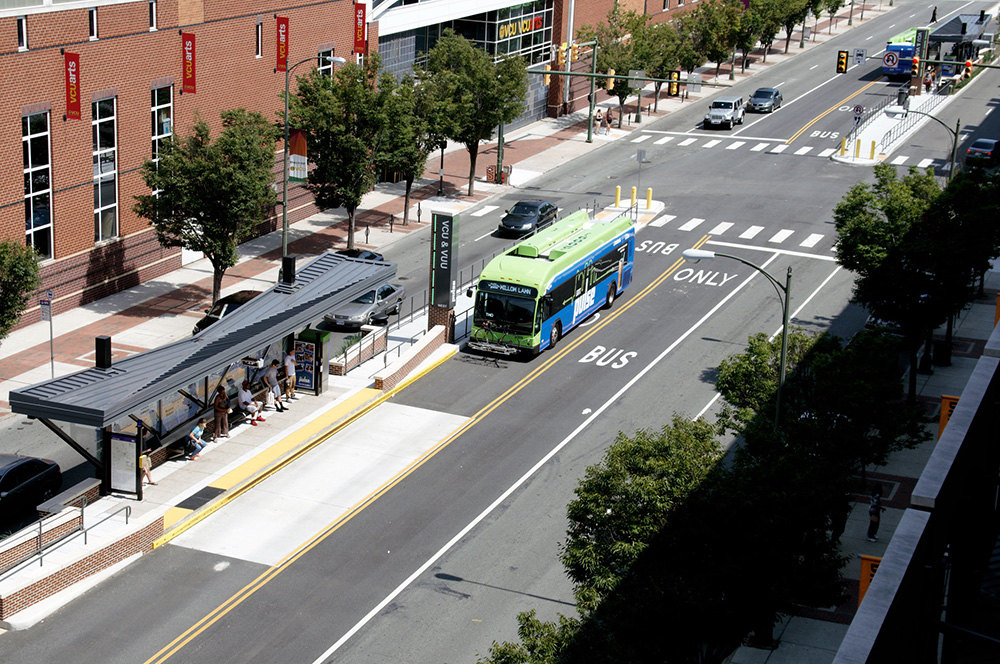Bus Rapid Transit

Introducing Bus Rapid Transit (BRT)
RTA is excited to introduce a new way to roll in New Orleans with Bus Rapid Transit (BRT) service. BRT is a different type of public transportation that provides a fast, efficient, and reliable way to move through the city. BRT service operates like rail service but utilizes modern busses to keep costs down, enabling us to more quickly offer this service to our region’s residents. See more about how BRT works here.
With Bus Rapid Transit, RTA will be able to:
| New Orleans’ first BRT line will boost transit service and access to jobs by connecting New Orleans East and the West Bank via CBD-Downtown. Nearly 3,000 RTA riders use the bus to travel from New Orleans East and almost 2,000 riders start their trips from the West Bank. For these existing riders, the RTA would be able to offer a premium service that will cut trips times in half and improve reliability, enabling greater access to jobs, services, recreation and opportunities |
|
Transportation equity is one of our major challenges in New Orleans. The New Orleans region has a severe and worsening disparity in access to jobs, education, and healthcare between households that can easily afford a car and those that cannot. Car ownership monthly costs average $860, taking up 20% of the median household income in New Orleans. Transit riders save costs but have far worse access, spending more time in transportation. BRT creates a way for car-owning households to save on expenses and improves access for current transit riders, relieving both of a major transportation cost. For households who may have moved to New Orleans East or the West Bank because of housing opportunity, BRT reduces the added transportation cost of residing in these areas.
The proposed BRT route would provide transit service for approximately 70, 600 people who currently live along the corridor, 18,000 of which are current transit riders. |
| The BRT service type will also provide a viable public transit alternative to driving a private car along these routes, attracting new riders. For current drivers, the BRT will be a more affordable way to travel while remaining convenient by offering short trip times, frequent trip options and a congestion-free trip. Other cities have seen ridership increases of up to 30% following the introduction of a BRT line. More cars off of the road also reducing greenhouse gas emissions impacting the region, supporting the City’s Climate Action goals. By both offering premium service for existing riders and attracting new riders, BRT will help increase RTA’s ability to serve the transportation needs of the region. |
| BRT offers rapid access to job centers and beautification along the corridors, which can result in renewed investment all along the transit corridors, attracting businesses, residential development, and other neighborhood amenities. BRT is an investment that makes business sense, as well. Young adults want to live and work in communities with good options to walk, bike and take transit. The business community sees transit as a critical infrastructure investment to retain, grow and attract businesses and people |
| In 2022, New Orleans is one of seven of the top 50 cities without a rapid transit system. Other cities that have created BRT lines have found an increase in investment around the corridor. This type of service supports goals described in the RTA’s Strategic Mobility Plan (SMP) as well as New Orleans’ Climate Action Plan (CAP), by enabling greater capacity in our transit system. It also may encourage greater opportunity for housing and job development at key sites along the corridor. |
BRT Service Features
Riding a BRT line is similar to riding light rail transit service. It features:
|
| Frequent arrivals (15 minutes or less), 7 days a week – the BRT will provide good trip options throughout the day, night and on weekends. |
| • Connects more people to places using an affordable transit option, providing equitable transportation choices to meet communities’ needs |
| • Enhances service for those current transit riders who need it most and expands RTA’s ability to meet travel needs for the region |
| • Responds to population changes and lessens the travel burden for those households who have located to places like New Orleans East because of the greater affordability in this area. |
| • Encourages investment in neighborhoods receiving BRT service |
| • Supports a sustainable and healthy community by lowering greenhouse gas emissions |
More Info
| June 2026 | Environmental and 30% Design |
| May 2027 | Final Design |
| October 2027 | Construction |
| October 2029 | Service begins |
New Orleans BRT renderings    |
BRT in Kansas City, Missouri
  |
BRT in Albuquerque, New Mexico
 |
BRT in San Francisco
|
BRT in Richmond, Virgina |





